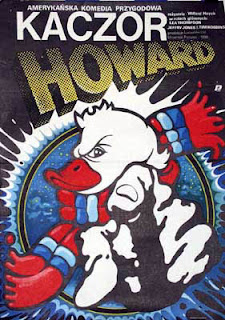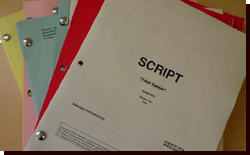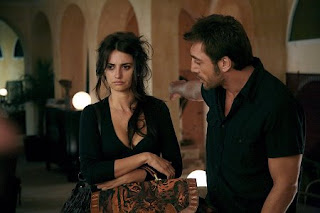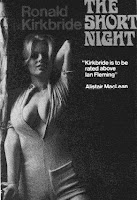The Great Character Arc Controversy

Hey guys,
Well, I can see that lips are flapping over my article called “The Case AGAINST Character Arcs” in the latest issue of Script Magazine. I’ve been told of a few debates on message boards, like here and here.
But nothing prepared me for the flood of e-mails in my inbox. So I shall try to address common questions and responses. I have no problem at all with people disagreeing or putting my feet to the fire to test whether what I said is true. I think that’s a good thing.
Hope you enjoy it.
-MM
----------------------------------
Uhh, who the hell is Joshua James?
Well, you could’ve looked him up on the IMDB. He’s also here where you can also view his library of full length plays. He also has scripts posted periodically at his profile on TriggerStreet.
McKee never said that every character must change.
I never once mentioned Robert McKee in my article. I was mostly talking about industry-wide attitudes about arcs. But I was alluding to McKee because I approached arcs in terms of changes to the inner nature, which McKee preaches. He wrote, “The finest writing not only reveals true character, but arcs or changes [to] that inner nature, for better or worse, over the course of the telling.” That’s bullshit. I suppose if you want to get real nitpicky with me about McKee’s quote, you could argue that he was not saying that you CAN’T have character arcs. He was merely saying that only the finest writing showcases an arc, an inner change in the protagonist. That’s STILL bullshit.
But that’s true. Stories with arcs are better.
No, that’s not true, and this is one of my points. You cannot apply the same “principles” to all genres. This is why listening to the gurus has been an intellectual step backwards to the art of storytelling because they take one principle, like character arcs, and apply it across the board to every story in every genre. Each genre has its own unique requirements and parameters. It would be incorrect to say, for example, that a mystery story would be better if you had an arc in the protagonist-investigator. It just wouldn’t. The point of these stories is the mystery itself and the investigation’s usually led by a dynamic character. To go with that character on the journey of solving the mystery can be such great fun. That’s the point! Can you imagine Sherlock Holmes having an arc in every single mystery? One could argue that an arc in Holmes in every story would detract too much from the mystery. Now, that’s not to say that you can’t have an arc or that you shouldn’t have an arc. The bigger point is, you shouldn’t REQUIRE AN ARC in mysteries. Or stick your nose up because a writer didn’t force an arc in the protag in a mystery.
But people aren’t making mystery films anymore.
Everything is cyclical.
Ghandi changed. He started out as a guy who was content within the existing system until it was demonstrated to him how unjust it was. He went from passive to becoming a fighter against injustice.
That’s not true. Beforehand, Ghandi was a lawyer fighting for what he thought was right before he switched to civil disobedience. While his reaction to the system changed, he never changed who he was.
You said that Ghandi matured and Clarice became wiser. Isn’t that an arc? Isn’t growth an arc?
Only if a change of some kind occurs. “Growth” is a wonderful thing for a character in a story, but it’s also a very broad term. A character changing from intolerant to tolerant could be viewed as “growth” as much as an arc. But an arc is a curve in the line, a change of some kind. But sometimes growth is a straight line. Sometimes a character endures an experience without changing. Say something happens. A protag must go on a path to correct something and meet a goal. He encounters obstacles and finally meets his goal. The character becomes wiser about the path, certainly, but does he change just by going down that path? Not necessarily. Sometimes a great story is a character staying true to oneself and not compromising, not changing, while going down a difficult path. There is growth in being tested and passing the test because the character will be stronger when tested again. But that doesn’t mean they changed who they are.
3:10 to Yuma fell apart in the third act, so that’s not really a good example, especially considering Crowe's character's totally unnatural personality transplant.
Even though Ebert gave it 4-stars, I personally never felt it was a perfect 4-star film. The original is a classic, though. And the author of the short story upon which the film was based, Elmore Leonard, had characters in his westerns who didn’t have backstories, psychological motivations, or sometimes, arcs. They were who they were. And they did what they did. There was a great article about that very thing in The New York Times. Terrence Rafferty wrote, “what’s striking about it is how little explanation Mr. Leonard feels compelled to offer for his hero’s grit and competence, and how little too the reader misses it.” With respect to Russell Crowe's character, I have to agree. It would've been better had he NOT had an arc. Hehehe...
Indiana Jones -- probably. But Raiders ended with a deus ex machina, anyway. Not only did Jones not change, he wasn't even crucial to the resolution (whether or not he was there, the Nazis would have opened the Ark and died). So there, I'd submit, the script was faulty despite the rip-roaring great ride of the movie.
Was it really faulty? You didn’t think so BEFORE your mind was warped by gurus and their ideas about arcs. Hehehe…
Indiana Jones doesn't believe in the POWER OF GOD in the beginning of the movie but he sure as hell believes in it by the end of the movie... LOL.
But did he change as a result? The sequels prove he doesn’t.
Indiana Jones has an arc. He goes from only caring about artifacts to caring about a human being -- Marion Ravenwood. At first she's only a means to an end, but by the end he cares about her for herself.
Look at that last scene again, as he and Marion are walking down those steps after the meeting with the government boys who assured him about “top men.” Indy keeps looking back. He can’t stop thinking about the Ark. And poor Marion has to pull his hat up and redirect his attention back to her. Does he really change?
Unk: Butch and Sundance go out fighting in the end... Did they have a choice? We don't know. Could they have come out with their hands up? Maybe -- maybe not. We watch them run away and outsmart everyone throughout the movie... Their change TO ME, is a change in venue along with no more running.
I respectfully disagree. They went out fighting because they were still running and they were cornered and had no other way out. They would’ve kept on running and being crooks forever. They would’ve had an arc only if they walked out with their hands up. That would’ve meant, “We are stopping and running no more.”
You have a very narrow definition of arcs.
I really don’t. I’m only referencing the ideas of narrow-minded gurus who have created an industry of narrow-thinking formula freaks.
I've always read the Hero's Journey as some kind of Jungian initiation where the hero discovers her/his inner strength/true self etc. Like in Star Wars where Luke finds "the force" in himself and becomes a Jedi. But I guess you can interpret it more literally, like when hero returns with some "elixir" and saves the day, but remains the same herself.
A lot of great action films are about heroes who are heroes without changing to become a hero. They just are. They just do it. It's who they are. It's in their blood. And the action genre evolved when the definition of “hero” evolved and how the new hero is different from the others. What is a hero in today's society? Of course, there’s nothing wrong with the hero’s arc. But should every action film require one? Not at all. I'd argue that more important than an arc is character depth.
There is, though, a certain tendency among beginners (at anything) to think they can be the exceptions without ever having followed the rules.
Here, here. Newbies should master the basics. However, if a newbie wants to write mysteries, the industry should be wise enough to know that mysteries don’t require arcs in the protagonists. The industry needs to quit being so damn ignorant. This isn’t about breaking the rules. This is about the rules being wrong. This is about everyone not knowing the unique rules for each genre.
I’d like to close with this. I got a fabulous e-mail that I really loved from a guy named Salvador Rubio:
For me, there are three kinds of character:
1-The one who changes (Let's call him the Hero): A character is shown having a flaw which he has to overcome after great difficulties and reluctance. Paul Newman in The Veredict is a great example.
2-The one who can't change (The Tragic characters). A character whose own personality doesn't let him change, no matter how hard he tries or how much he know he has to change. Is the preferred character for tv-shows (picture Dr. House and his inability to be show his feelings and be humane, although it is repeatedly shown that he would like to do it). As for movies, characters of this type sometimes they prefer to stick with their flaws and keep living no matter how badly they have to change. There are plenty, but let's say Kane in Citizen Kane.
3-The one that doesn't really need to change: James Bond, Indiana Jones, etc. There's a second variety to this, in which the character needs to change but doesn't do it because he doesn't realize his flaws, although everyone does: Don Quixote and his derivates.
As every theory, this is not perfect, but works for me in most cases.

































































